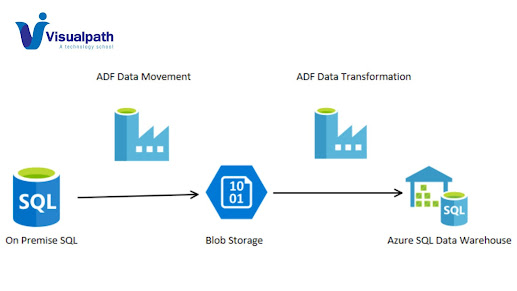Get started analyzing with Spark | Azure Synapse Analytics
Azure Synapse Analytics (SQL Data Warehouse) is a cloud-based analytics service provided by Microsoft. It enables users to analyze large volumes of data using both on-demand and provisioned resources. This connector allows Spark to interact with data stored in Azure Synapse Analytics, making it easier to analyze and process large datasets. - Azure Data Engineering Online Training
Here are the general steps to use Spark with Azure Synapse
Analytics:
1. Set up your Azure Synapse Analytics workspace:
- Create an Azure Synapse Analytics workspace in the Azure portal.
- Set up the necessary databases and tables where your data will be
stored.
2. Install and configure Apache Spark:
- Ensure that you have Apache Spark installed on your cluster or
environment.
- Configure Spark to work with your Azure Synapse Analytics workspace.
3. Use the Synapse Spark connector:
- The Synapse Spark connector allows Spark to read and write data
to/from Azure Synapse Analytics.
- Include the connector in your Spark application by adding the
necessary dependencies.
4. Read and write data with Spark:
- Use Spark to read data from Azure Synapse Analytics tables into
DataFrames.
- Perform your data processing and analysis using Spark's capabilities.
- Write the results back to Azure Synapse Analytics. - Azure
Databricks Training
Here is an example of using the Synapse Spark connector in
Scala:
```scala
import org.apache.spark.sql.SparkSession
val spark =
SparkSession.builder.appName("SynapseSparkExample").getOrCreate()
// Define the Synapse connector
options
val options = Map(
"url" ->
"jdbc:sqlserver://<synapse-server-name>.database.windows.net:1433;database=<database-name>",
"dbtable" ->
"<schema-name>.<table-name>",
"user" -> "<username>",
"password" -> "<password>",
"driver" -> "com.microsoft.sqlserver.jdbc.SQLServerDriver"
- Azure
Data Engineering Training
)
// Read data from Azure Synapse
Analytics into a DataFrame
val synapseData =
spark.read.format("com.databricks.spark.sqldw").options(options).load()
// Perform Spark operations on
the data
// Write the results back to
Azure Synapse Analytics
synapseData.write.format("com.databricks.spark.sqldw").options(options).save()
```
Make sure to replace placeholders
such as `<synapse-server-name>`, `<database-name>`,
`<schema-name>`, `<table-name>`, `<username>`, and
`<password>` with your actual Synapse Analytics details.
Keep in mind that there may have
been updates or changes since my last knowledge update, so it's advisable to
check the latest documentation for Azure Synapse Analytics and the Synapse
Spark connector for updates or additional features. - Microsoft
Azure Online Data Engineering Training
Visualpath is the Leading and Best Institute for learning Azure Data Engineering Training. We provide Azure Databricks Training, you will get the best course at an affordable cost.
Attend Free Demo Call on - +91-9989971070.
Visit Our Blog: https://azuredatabricksonlinetraining.blogspot.com/
Visit: https://www.visualpath.in/azure-data-engineering-with-databricks-and-powerbi-training.html
.jpg)


Comments
Post a Comment